Episode 27 Show Notes
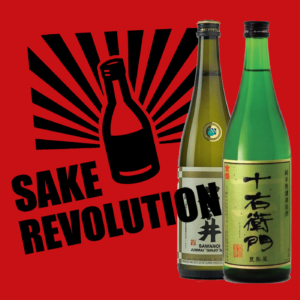 Season 1. Episode 27. Ok…if I say, “Quick – think of Tokyo!” What image pops to mind? Maybe skyscrapers? Over-stuffed subway cars? Maybe even Blade Runner?? You might be surprised to learn that Tokyo is not just the city proper but also a region (Similar to New York City compared to New York State). There is lots of countryside with rolling hills and even rivers to explore. Today takes us beyond the hard driving city and out to the countryside of Tokyo Prefecture. There you will find picturesque sake breweries that will surprise and delight with their charms. Set your preconceived notions of Tokyo aside and join us in an exploration of the small but delicious world of sake made in Tokyo.
Season 1. Episode 27. Ok…if I say, “Quick – think of Tokyo!” What image pops to mind? Maybe skyscrapers? Over-stuffed subway cars? Maybe even Blade Runner?? You might be surprised to learn that Tokyo is not just the city proper but also a region (Similar to New York City compared to New York State). There is lots of countryside with rolling hills and even rivers to explore. Today takes us beyond the hard driving city and out to the countryside of Tokyo Prefecture. There you will find picturesque sake breweries that will surprise and delight with their charms. Set your preconceived notions of Tokyo aside and join us in an exploration of the small but delicious world of sake made in Tokyo.
Skip to: 00:19 Hosts Welcome and Introduction
Welcome to the show from John and Timothy
Skip to: 00:55 ake Eduction Corner: Tokyo City vs Prefecture
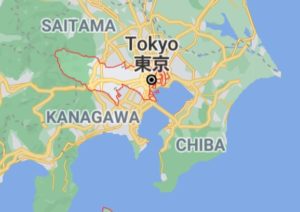
Photos of Sawanoi Brewery:
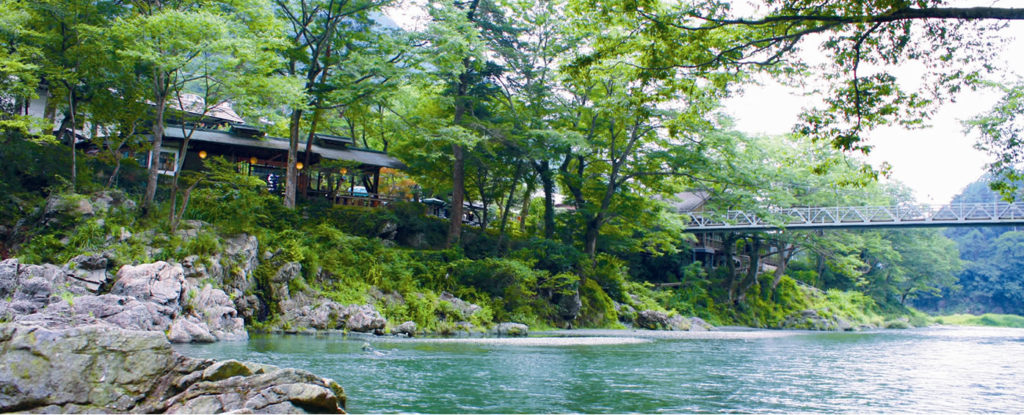
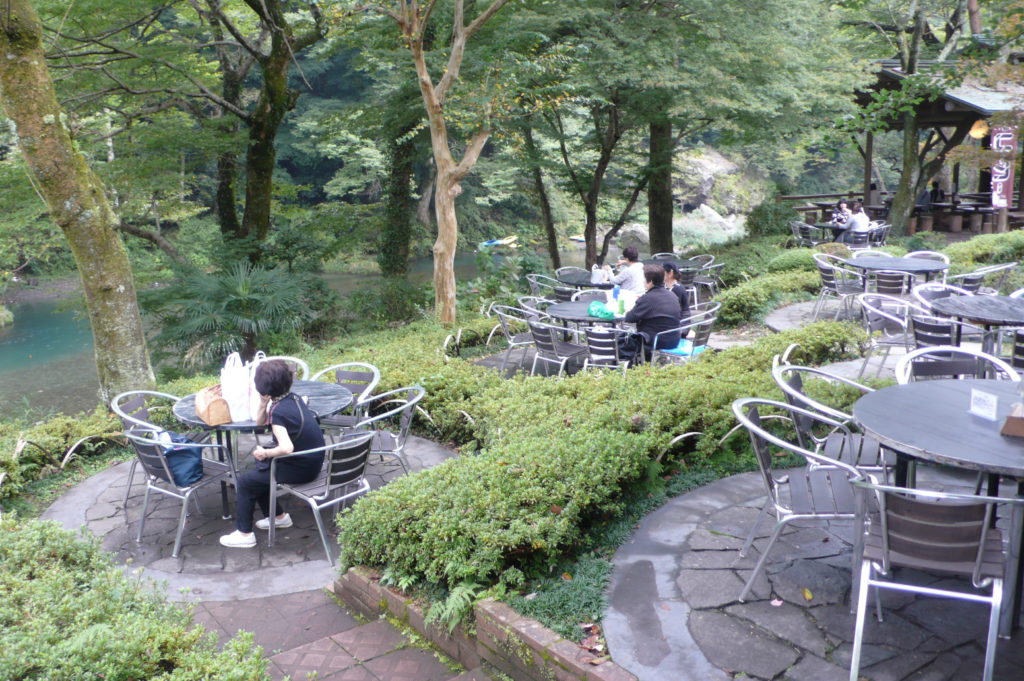
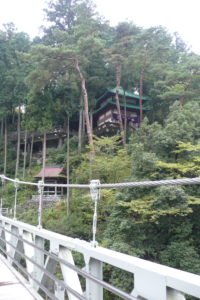
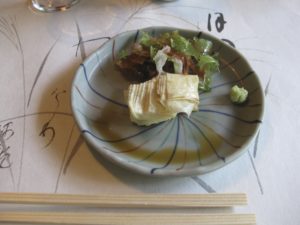
Skip to: 7:41 Sake Introductions
John and Timothy introduce their sakes for this week.
Skip to: 11:20 Sawanoi Junmai Ginjo
Sawanoi Junmai Ginjo
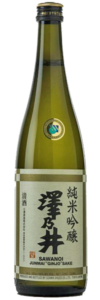
Brewery: Owaza Shuzo
Classification: Junmai Ginjo
Acidity: 1.5
Alcohol: 15.5%
Prefecture: Tokyo
Seimaibuai: 58%
SMV: +3.0
Rice Type: Gohyakumangoku
Skip to: 16:01 Sake Tasting: Kinkon Muroka Genshu Junmai Juemon
Kinkon Muroka Genshu Junmai Juemon
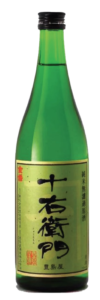
Acidity: 1.6
Alcohol: 17.5%
Brewery: Toshimaya Shuzo
Classification: Genshu, Junmai, Muroka
Importer: Kuramoto US
Prefecture: Tokyo
Rice Type: Hattannishiki
Seimaibuai: 60%
Brand: Juemon (十右衛門)
Skip to: 26:42 Show Closing
This is it! Join us next time for another episode of Sake Revolution!
Episode 27 Transcript
John Puma: 0:22
Hello everybody. And welcome to sake revolution. America’s first sake podcast. I’m your host, John Puma from thesakenotes.com. Also the administrator at the internet sake discord and our resident sake nerd at large
Timothy Sullivan: 0:36
and I’m your host Timothy Sullivan. I’m a sake samurai sake educator, as well as the founder of the urban sake website and together John and I will be tasting and chatting about all things sake. And doing our best to make it fun and easy to understand.
John Puma: 0:51
that’s all right, Tim. So what is in store for us today?
Timothy Sullivan: 0:55
Well, I wanted to ask you a question, get started by asking you, when you think of sake production in Japan, what areas of Japan do you think of.
John Puma: 1:05
That’s an easy one. Uh, I have a type. So I’m going to say Yamagata
Timothy Sullivan: 1:09
You’re not biased at all.
John Puma: 1:11
not, not the least.
Timothy Sullivan: 1:13
So Yamagata well that I would agree with you. That’s a pretty famous region for sake production in Japan. Can you think of any other areas that are really well known?
John Puma: 1:22
Sure. Um, I happen to know that my friend Tim Sullivan spent a year at in Niigata. And I know that Niigata has a massive number of sake breweries. So I’m going to think of Niigata
Timothy Sullivan: 1:33
Yes, that’s a that’s. Hey, that sounds great. And 90, 90 sake breweries in Niigata. So that’s more than any other prefecture.
John Puma: 1:42
that’s going to be a, it’s going to be a long, deep dive when we do that one. maybe a series.
Timothy Sullivan: 1:46
I think that, Kyoto is another very famous sake region for production and Kobe in Hyogo prefecture. That’s another real Homebase for sake
John Puma: 1:56
And great stuff there too.
Timothy Sullivan: 1:58
But there’s one other place that. Makes really good sake that I think most people would never think of. And that place is Tokyo
John Puma: 2:11
Wait, you mean the Tokyo? Tokyo. Tokyo?
Timothy Sullivan: 2:15
with the skyscrapers.
John Puma: 2:17
the one that one. Yeah.
Timothy Sullivan: 2:18
I think when you think of Japan, people either think of Tokyo or they think of sake production, but they don’t think of both together.
John Puma: 2:25
when I found out there was sake, production in Tokyo, I was kind of shocked. And I was, I thought that maybe, uh, something was lost in translation and I wasn’t understanding properly. So they’re sake production in Tokyo. Obviously this is not happening in the, in the blade runner ish areas that people think of when they think of Tokyo, um, you know, it’s not skyscraper. And then sake brewery that would probably not make great sake. So where are they doing this?
Timothy Sullivan: 2:49
well, the first thing you need to know is that Tokyo is not just the city proper, there’s the rest of the prefecture or the region. so if you think of, Tokyo like a state, there’s the capital, but there’s also parts of Tokyo that are rural and very countryside. And that’s where most of the breweries are located.
John Puma: 3:09
And so there’s an outskirts of Tokyo with where the sake, breweries, I guess some greenery I’m hoping some greenery how many are we talking here?
Timothy Sullivan: 3:19
10, roughly 10 sake breweries in Tokyo. prefecture.
John Puma: 3:23
I would not have guessed 10. I think I’m kind of shocked and floored at the idea. There’s 10 sake breweries lurking about, in Tokyo. I mean, I knew there were a few, but that’s a lot more than I expected.
Timothy Sullivan: 3:35
Yeah. One thing to think about though, is that I would consider Tokyo to not have as much of a prefectural style as some other places do.
John Puma: 3:45
Hmm. And why would that be.
Timothy Sullivan: 3:48
Well, when you talk about Niigata Niigata has a Togi or a master Brewer’s Guild, all of its own. And it has over 90 breweries that kind of all connect and work together. And over the years, they’ve forged this regional style that is largely based off, you know, the type of. Primary water source that they have there and the type of climate that they have. And it’s very cohesive. I’d say it’s very similar in Yamagata very similar in Kyoto and those other places we mentioned, but Tokyo is an area where lots of people come in and out, lots of moves. Excellent. And they don’t have the. Critical mass, I think to build up a true regional style, but I will say that just being, being a sake producer in Tokyo is unique and a hallmark in and of itself, in my opinion.
John Puma: 4:41
Right. so say have one another to really bounce off of, in the same, at the same scale that a lot of the other prefectures have, they’re more likely to just kind of go off on their own and try things. they’re on way, is that kind of. What we’re seeing.
Timothy Sullivan: 4:56
Yeah, I think that it’s a bit more of a challenge when you’re so few to create that true identity, but. There is some amazing sake from Tokyo and you and I are going to be tasting two examples today
John Puma: 5:10
That’s right.
Timothy Sullivan: 5:12
sake that’s made in Tokyo. I can’t wait.
John Puma: 5:14
Yeah. And I’m a big fan of both of these sakes. I’m very excited to be drinking both of them. In fact, the one you’re going to be drinking, I have not had in years as an old favorite. So I’m a little bit jealous, just a little bit though, because the one I’m going to be tasting, I’m also a big fan of, so I win either way.
Timothy Sullivan: 5:30
It is a win, win situation.
John Puma: 5:32
Okay. Exactly. And you went either way. It’s great.
Timothy Sullivan: 5:36
Excellent. Well, you know, I think we should get right to it. Jump right into the tasting. So what we usually do is,
John Puma: 5:45
we’re barely six minutes into this podcast and we’re gonna be drinking sake. You ready?
Timothy Sullivan: 5:49
well, we just, we just took a quick stroll through the education corner and we are right in the tasting kitchen now. So
John Puma: 5:55
is my favorite episode by far now.
Timothy Sullivan: 5:57
let’s go for it.
John Puma: 5:58
All right.
Timothy Sullivan: 6:00
So we usually both introduce our sakes first. So why don’t you tell us a little bit about yours?
John Puma: 6:05
Sure. so my sake is, from a brewery called, Toshimaya shuzo located again in Tokyo of all places. and it’s part of a brand called Kinkon. And the name of the sake is Juemon and it’s, Junmai muroka genshu. So. it’s touching on a few of those, a few of those types that we’ve mentioned in the past. I don’t think we’ve gone too deep on muroka. We’ve talked a little bit about it. We’ve talked a little bit about Genshu. basically the muroka means that it is not charcoal filtered. And the Genshu means that it is not diluted. So at the end of the brewing, it is not, they’re not adding any water to bring it down. this is what outside the sake world. You’d probably call cask strength. and it’s using a rice called a hattan nishiki. And it’s milled down to 60% remaining.
Timothy Sullivan: 7:02
Excellent. Sounds really intriguing. because it’s a genshu, no water added it. It has a little bit of a higher alcohol percentage
John Puma: 7:08
very slightly. It’s a 17 and a half actually. So it’s a little bit more than slightly. It’s a, that’s a kind of substantial. All right.
Timothy Sullivan: 7:17
All right. Well, let me introduce you to my sake this is called Sawanoi and it’s a Junmai ginjo. So Sawanoi. is the brand name. The brewery is Ozawa. Shuzo. And it’s located in Tokyo prefecture. Amazing. it’s a Junmai Ginjo grade sake and it has 15% alcohol. The rice milling rate is 58% remaining and the rice is gohyakumangoku.
John Puma: 7:47
Ooh, that sounds familiar. Rice.
Timothy Sullivan: 7:49
And the SMV that rating of sweet to dry is a plus three, which is a pretty neutral rating.
John Puma: 7:54
Yeah.
Timothy Sullivan: 7:56
Yeah. So. Before we get to the tasting. I do want to mention that I had the really good fortune to visit sawanoi brewery and get a tour. this was many years ago, probably about 10 years ago. And, the landscape around the brewery is. Probably the exact opposite of what you would think of when you think of Tokyo. Again, some people have that blade runner, skyscraper idea in their head, but when you go go to Ozawa Shuzo and you turn the corner and you go down the little path and you enter their compound, it is the most beautiful place you’ll probably ever visit. It is so beautiful. John, I’m actually going to show you a picture. Look at this.
John Puma: 8:40
Woo. All. Alright. That is gorgeous.
Timothy Sullivan: 8:42
Yes. Not what you expected for
John Puma: 8:44
now there’s, there’s no neon to be seen at all. This is very surprising.
Timothy Sullivan: 8:49
It’s Harrison Ford there.
John Puma: 8:51
if you sent this to me and said, this was, Oh, here, John, this is a picture I took in Kyoto. I’d be like, Oh, obviously you did. Uh, so it’s it’s cause that’s what you expect when you think of Kyoto. It’s not what you expect when you think of Tokyo.
Timothy Sullivan: 9:03
Now we’re going to have a picture of Ozawa Shuzo a picture or two in our show notes. So check them at sakerevolution.com Uh, but for those of you who are just listening in, there is a beautiful river that runs across the main campus of this brewery. There is a suspension bridge on the far side of the bridge is a. small Shinto shrine nestled into the woods. And the brewery is on the near side of the bridge. There’s a beautiful tofu, specialized restaurant on the campus as well. So you can sit in a tatami room, overlooking the bridge and the river, eat a tofu and drink the Sawanoi sake which I had the great privilege of doing it was delicious. And the brewery is very, Close to Tokyo proper. So you can take the train for about an hour and a half an hour and two hour and a half. And, you are in this very idyllic setting and they do tours as well. So it’s a great place if you’re in Tokyo and you want that sake experience, I highly recommend making a trip out to Sawanoi.
John Puma: 10:13
And, and guys remember that’s an hour and a half. Tokyo is a big place. It is not a, it’s not the city on the same scale. as a lot of us understand it in the U S it’s a very large place as much more than a city. It is actually several cities. it’s hard to explain. We’ll get into another day. Uh,
Timothy Sullivan: 10:30
upon city. but I think it’s also important to mention that if you have an hour and a half on the bullet train, that’s one thing, but an hour and a half on like a local commuter train is something different. So, you know, you can get pretty far away on the bullet train, but. For a local commuter train, getting out to Sawanoi brewery is a pretty quick trip and you can spend the whole day there. They have a gift shop. They have the brewery tour, they have the tofu restaurant and they have the beautiful outdoor seating areas. You can sit there and just absorb the. The scenery. It’s really beautiful. So if you want to see the pictures of this gorgeous place, just check our show notes and John, I think it’s time to get to the tasting. And if I remember, I let you go first, last time. So I’m gonna go first this time, if it’s all right with you,
John Puma: 11:16
I think I can, uh, I think I can accept
Timothy Sullivan: 11:20
can. All right. So this is our Junmai Ginjo from Sawanoi. I’m going to go ahead and open this up, give it a pour. All right. So in the glass, it’s very, very clear and beautiful. It has a nice viscosity. The aroma is very gentle and has mild fruity components to it. A little bit of Apple, a little bit of pear soft. Dare I say wafting Mellon. Yes. There’s a little melon.
John Puma: 12:00
it’s our favorite type of melon.
Timothy Sullivan: 12:02
Very, very gentle fruity aroma, just that gorgeous, Ginjo style aroma. That is just so yummy and delicious and just really great, but it’s gentle. It’s soft. It’s not overt. It’s not sticky. It’s not cloying in any way. Just really gentle and lovely. Let’s take a sip. Hmm. Yeah. So this is a really nice and smooth, uh, it is not. Overtly sweet. Again, the SMV for my sake is plus three, which is very neutral, but the finish of this sake has a brightness to it. it’s not an overly highest acidity or not an overly high SMV, but there is a brightness at the finish that kind of balances out the fruity. Fruitiness and any hint of sweetness you might get from that. So, overall, my impression is that this is a balanced sake using the gohyakumangoku sake rice. Again, that’s a sake rice actually from Niigata and it is known for being more light and airy in the style of sake day. You get out of it. And I think that comes across here. It’s kind of a, a gentler approach, a light touch, and that really comes across on this. On the sawanoi really delicious. you’ve said that you’ve had this before, but not for a long
John Puma: 13:25
Right. So it used to be a GoTo for me, at an old izakaya that I used to visit, near my office. And. It was it’s like everything just scribing is bringing back such a vivid memories for me. Cause it is something, yeah, it was those notes that made me want to have that sake It made me, made me have a carafe of it. Every time I went to this restaurant. I just haven’t had an all the time. I don’t see it that much anymore, which is unfortunate.
Timothy Sullivan: 13:49
Yeah, it’s funny. The label is mostly in Japanese, but on the bottom it says sawanoi junmai Ginjo sake and the Ginjo is in quotes.
John Puma: 14:02
To my Ginjo, I don’t know.
Timothy Sullivan: 14:05
Ginjo
John Puma: 14:07
quotes, Ginjo
Timothy Sullivan: 14:08
I love those, memes like an unnecessary quotes. I think this falls into that category junmai ginjo. but the one thing I never found out about this brewery is that their, their little logo is a
John Puma: 14:22
It’s a crab. Yeah.
Timothy Sullivan: 14:24
I’m just showing John right now that very top cap has a really cute little crab on it. I don’t know if it’s that that’s just their
John Puma: 14:32
I was about to ask you if you had any idea why that was
Timothy Sullivan: 14:34
Well, maybe one of our listeners can write in and tell
John Puma: 14:37
be great.
Timothy Sullivan: 14:39
Yeah.
John Puma: 14:40
the mystery of the sawanoi crab.
Timothy Sullivan: 14:42
yeah. So the river, you’re going to love this, John, the river that cuts through the sawanoi brewery compound is the Tamagawa river.
John Puma: 14:53
Really? The Tamagawa river.
Timothy Sullivan: 14:55
tamagawa river.
John Puma: 14:58
Did they, did anybody tell Phil Harper about this
Timothy Sullivan: 15:03
He built his brewery in the wrong place.
John Puma: 15:07
clearly? Oh, alright.
Timothy Sullivan: 15:11
yeah. So there are mountains in Tokyo prefecture, there’s beautiful countryside. And, the bottle says that the water from the tamagawa river is rated as one of the top 100 best drinking waters in Japan.
John Puma: 15:27
Now do we know anything about where they’re sourcing the rice? I mean, other rice fields in Tokyo.
Timothy Sullivan: 15:33
Hmm, that’s a great question. Honestly, I don’t know where this is buying their rice specifically, but as I mentioned, Gohyakumangoku primarily is grown in Niigata and because they don’t have, they don’t have vast areas of countryside in Tokyo. I imagine that they may be buying it from somewhere. Uh, but that would be interesting to find out. I think that they probably, um, if I had to guess, I’d say they might be buying it from another prefecture
John Puma: 16:01
Hmm. Nice. Well, I think it’s time for me to open up the Juemon
Timothy Sullivan: 16:08
over to you, John.
John Puma: 16:09
Oh, fantastic. So as I mentioned earlier, this is using that a hattan nishiki rice and, astute listeners will remember, this is not the first time that we’ve had this rice on the show before this was a rice that was made famous in Hiroshima, which was apparently where it was born back in, back in the seventies. I want to say.
Timothy Sullivan: 16:32
That’s something that both of our sakes have in common. My sake uses a rice that was born. In Niigata another prefecture and your sake uses a sake rice from that is completely identified with a totally different prefecture. So that’s interesting. I think that speaks a little bit to the identity of Tokyo, you know, it needs to bring in things from, from other places and the sake rices, speak to that. Yeah. So I’m excited to see what yours tastes like.
John Puma: 17:07
So going ahead and, pouring this and, at sake revolution, we use wine glasses. We recommend wine glasses. You’ve got them at home already. You don’t need any kind of specialized glassware to drink sake So this is interesting because on the nose it’s got a rich, a richness and a little bit of a rice forwardness to it, and it reminds me a lot of omachi. Remember, we talked about that specific omachi note a long time ago in an old episode, uh, comes through, especially on the nose. It’s hard to describe outside of, Oh, this is like, omachi this reminds me a little bit of that.
Timothy Sullivan: 17:45
Some people describe omachi as having like a depth of flavor with a hint of earthiness to it.
John Puma: 17:50
Oh, this is wonderful. This is very much not my style of sake But it is absolutely fantastic on the last, uh, not, everything’s gotta be the thing. That’s either one type of sake I like you gotta like other types. Hm. That’s very nice and round. You’re getting that. There’s a little bit of that alcohol on finish. But you’re getting some nice complexity, richness, and fruit blended in the front. And it’s very unique, very interesting. And unlike a lot of the things I drink and I enjoy, I think this is going to go really well with food too. Really nice stuff. I wouldn’t have expected this to be something that you get in Tokyo. this reminds me a little bit more of Hiroshima. Okay. And that’s probably because of that rice.
Timothy Sullivan: 18:39
Now, as we mentioned before, your sake is a genshu, no water added 17.5% alcohol. Can you feel the weight of that alcohol or is it well integrated?
John Puma: 18:49
I mean, it’s, it’s a little bit on the end. There’s that you got that little bite, but by and large, this is. Not something it doesn’t have that Genshu hit of like, remember when we drank a few episodes back, do you know, Narutotai, which is that nama genshu you that is like punching you in the face with its presence and with the alcohol, this is a lot more subtle. It’s not subtle. It’s still letting you know it’s there, but it is not aggressive in the way of that, of that nama genshu. This is so much more relaxed in comparison.
Timothy Sullivan: 19:23
Yeah, another way you can look at that. John is the viscosity, like how coating is it on your palate? some of the nama genshus, like you were just talking about really coat your palate and they’re very coating on the tongue and lighter genshus can be a little bit. Easier and a little bit more nuanced. And this one I’m assuming is a pasteurized version of a genshu.
John Puma: 19:47
Yes, this is not a Nama.
Timothy Sullivan: 19:50
you don’t have that raw Nama edge to it. It’s a little bit more subtle.
John Puma: 19:56
I’m very impressed at how, um, so this is a very complex sake and it’s difficult. I think, to balance a sake that’s doing so much and it does it really well. It’s just really well balanced. there’s a lot going on and it all kind of fits really well together. Really nice. And I think this is going to change significantly, probably, maybe for the better once it warms up a little bit hard to tell, but it’s starting to a little bit in my hand and it, it is definitely, changing its style a bit like just as I’m sipping right now.
Timothy Sullivan: 20:30
And what do you think for your sake What do you think for food pairings?
John Puma: 20:34
This is going to stand up to some things it’s not going to be, it’s not going to deal with things as aggressive as that narutotai did, but, uh, I don’t think you need to be afraid of having this with, with heartier foods. you know, I would like to have this with Yaki Tori. I think that’s going to go really, really well. Um, what is, uh, Tim you have to remind me. I always forget what is the chicken meatball yakitori tsukune, and they usually have it with like a sauce on there. I usually dip in the sauce and grilled a little bit. I think that, that the, a little bit of tanginess of the sauce that complexity in the end, it’s going to go really well with this.
Timothy Sullivan: 21:16
Yeah, this is the izakaya education corner, but there’s two, two toppings. You can get a tare, which is the sauce. Or the shio, which is the salt. So the can be prepared in two different ways and both of them are absolutely delicious and sound like they either way would be a perfect pairing for your sake
John Puma: 21:37
What about you?
Timothy Sullivan: 21:39
Oh, well this is light and gentle and really well balanced. I would not want to have this sake with anything that had too much weight to it. So I’m thinking of like poached salmon would be great with this or, fish, different fish dishes. I’d really like it with, salads and vegetables, but the one thing I keep coming back to the brewery has a tofu restaurant. So if you think about all the different preparations of tofu and they get very elegant in Japan, have you ever had Yuba, which is the tofu skin?
John Puma: 22:19
I think I’ve had it once.
Timothy Sullivan: 22:21
Oh, my gosh. It used to freak me out thinking about tofu skin, because you know, nobody likes when you have pudding or something. No one likes that skin on top, but when you prepare it correctly, tofu skin is like the best thing it’s called yuba in Japanese. And it is so delicious. You can roll it up in little rolls and put it in some soy sauce and a little wasabi on the side. And it is amazing. So. That would be my ideal pairing with this particular sake
John Puma: 22:51
So you’re saying that the next time I’m offered this, I should definitely jump on it.
Timothy Sullivan: 22:55
Yes, I’m very pro yuba bought so next time, next time you get a chance to try a tofu, tofu skin and a well-prepared Japanese restaurant. I would recommend it for sure.
John Puma: 23:08
Nice. Nice, nice.
Timothy Sullivan: 23:10
Yeah.
John Puma: 23:11
Very interesting. this is a, been a little bit educational, which I think we’d like to do. again, I was aware that these, uh, these breweries existed and that they existed in Tokyo. In fact, my bottle has a little, Tokyo. Uh, kind of a prefectural, uh, sticker on it and it borrow some of the design language of the 2020 Olympic designs. I was probably put on there to kind of celebrate that and, and kind of promote Tokyo for the Olympics. hopefully they get to, experience that in the future. As we all know we’re recording this in 2020. So there has not been an Olympic games this year, but I assume that they’re going to try to get this going someday soon. and the Sawanoi, I mentioned earlier, I’m very familiar with, I must’ve been drinking it for months. Months and months, maybe even a year, maybe even two years before I found out it was actually made in Tokyo. I had absolutely no idea. I was very ignorant to that, to that concept. And then when I found out I was bewildered because much like we described earlier, my thoughts on Tokyo are very concrete and cement and neon. It’s not something you think of. You don’t think that they can make sake here, but here they are making really, really great stuff.
Timothy Sullivan: 24:25
Yeah. And another thing I think that Sawanoi has done well. Is that they’ve made this like destination compound out of their brewery. You know, it’s not just like an industrial building. You can go there, you can spend the day, you can eat at the restaurant. You can go to the gift shop. They have a cafe, they have outdoor seating. You can tour the brewery, which is not common for most sake breweries and they have the bridge and the river, and it is just so picturesque. Really great. So they’ve done a great job with that. And I think that for people who are in Tokyo, And they’re not traveling far away from Tokyo. It’s a great chance to have that sake experience without going too far a field.
John Puma: 25:05
Nice. Um, have you visited, uh, Toshimaya?
Timothy Sullivan: 25:09
No, I’ve never been there.
John Puma: 25:10
Neither am I I’ve never been to a brewery in Tokyo so we can. At the time asked me about that one. I can, I can safely say no, I have not regrettably been to a Tokyo brewery, but maybe one day
Timothy Sullivan: 25:23
Yes,
John Puma: 25:24
that’s a to do list for when we get to go back to Japan again,
Timothy Sullivan: 25:26
Yeah. We seem to say that every week,
John Puma: 25:28
I’d say we’re making a, we’re making a list and it’s going to be, you always make the list too long to do in one trip. So you have to, you have spillover and you have to go again. That’s the plan. This is all working as intended.
Timothy Sullivan: 25:42
Yes. It’s going to be great. When sake revolution can go on the road, I think we’re going to have a blast.
John Puma: 25:48
Yeah, it’s going to be a good time. It’s gonna be hard to get our episodes recorded, but we’re going to have fun.
Timothy Sullivan: 25:55
Well, this has really whetted my appetite for learning more about sake production in Tokyo. These are two great breweries, but there’s a number of other breweries that we can look at in the future. And I’m really excited to learn more about what makes a brewery in Tokyo, you know,
John Puma: 26:15
Yeah. And I also really liked that both of these sake is while they’re making the same prefecture, but wildly different flavors like yours, you have this very, very, uh, dare I say. John styles. sake. and I have somebody a little bit more, yeah, my wife and I both enjoy this particular sake it’s cause it’s got that boldness too. It’s got a lot of, got a lot of heft. Those muroka genshus will get you every time.
Timothy Sullivan: 26:42
All right. Well, thank you so much to all our listeners for tuning in. We really do hope that you’re enjoying our show. Now, if you’d like to show your support for sake revolution, one way you can really help us out would be to take a couple of minutes and leave us a written review on Apple podcasts. It’s one of the best ways. For you to help us get the word out about our show
John Puma: 27:02
And as soon as you’re done writing your review, please make sure that you subscribe and also tell a friend this why you and your friend will both be getting our podcast delivered to their device automatically. Every time we leave at least one.
Timothy Sullivan: 27:15
and as always to learn more about any of the topics or sakes, we’ve talked about in today’s episode, including those beautiful photographs of sawanoi, be sure to visit. SakeRevolution.com for the detailed show notes.
John Puma: 27:30
And if you have a sake question that you need answered, we want to hear from you reach out to us at [email protected]. So until next time, please remember to keep drinking sake and KANPAI!